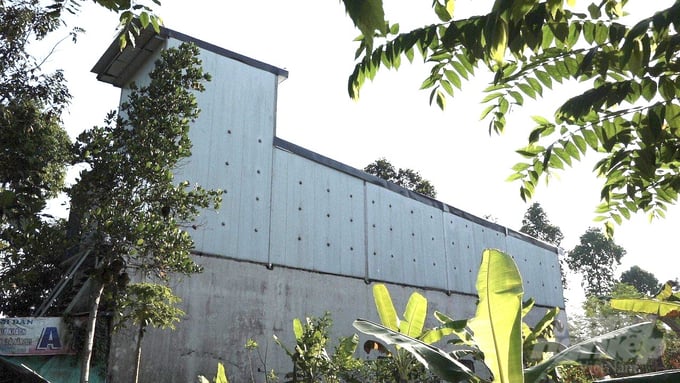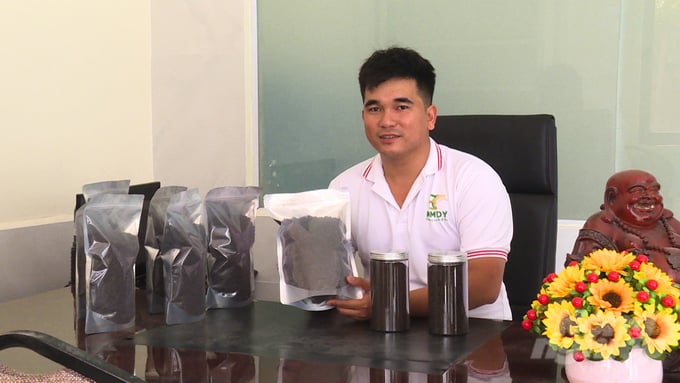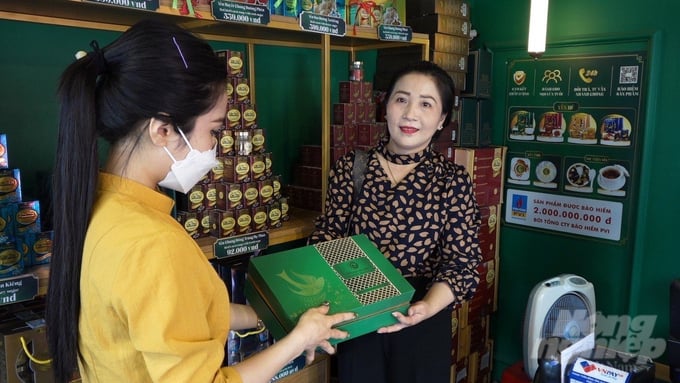November 26, 2025 | 11:56 GMT +7
November 26, 2025 | 11:56 GMT +7
Hotline: 0913.378.918
November 26, 2025 | 11:56 GMT +7
Hotline: 0913.378.918

In recent years, the Mekong Delta has seen a significant increase in the construction of swiftlet houses thanks to the attractive economic value this industry brings. Photo: Ho Thao.
Swiftlet farming has had a strong development in recent years and the construction of swiftlet houses is considered a "white gold mine" with the ability to bring significant profits. A successful swiftlet house can generate hundreds of millions of VND a year.
The whole country currently has approximately 24,000 swiftlet farming establishments, producing 100 tons of bird's nests each year. Particularly in Tra Vinh province, there are 628 swiftlet houses and more than 500 farming households, and many people have made a fortune without requiring food costs. From raw bird's nest to preliminary processed bird's nest, the prices fluctuate around VND 18 - 22 million/kg and reach even higher marks depending on the season.
However, to achieve success in swiftlet farming, farmers need to focus on implementing safe husbandry practices. Nguyen Van Trinh, a bird's nest farmer in cluster 1, Chau Thanh town, Tra Vinh province, shares his experiences in maintaining his swiftlet house. He cleans the swiftlet house twice a month. “You have to clean the walls and floor to prevent bacteria and parasites as well as pathogenic fungi and mice,” he said. Trinh also turns on the speakers at fixed times to attract the swiftlets and let them develop habits without negatively affecting the neighbors.
Along with exploiting the bird’s nest business, Trinh also utilizes bird droppings to make soil fertilizer, fungicides and eelworm, as well as compost catalysts. This not only brings high economic value but also contributes to the sustainable development of the agricultural industry.

Raising swiftlets provides a source of fertilizer for crops. This is an effective way to utilize resources and maximize the benefits of this form of livestock farming. Photo: Ho Thao.
Duyen Hai district is making great developments in the construction of swiftlet houses. From 28 in 2018, the number of swiftlet houses has increased to 71 in early 2023. One thing to note is that many swiftlet farming households have not registered and participated in the production - processing linkage to optimize economic value from this form of animal husbandry.
Although bird’s nests are fairly profitable, swiftlets are susceptible to infectious bacterial and parasitic diseases, especially during the rainy season. Therefore, monitoring and preventing diseases in swiftlet need to be taken seriously,” said Tran Quoc Doan, Head of Office of Agriculture and Rural Development of Duyen Hai district.
Swiflet farmers need to regularly take samples and monitor the disease situation while complying with environmental hygiene regulations and ensuring good nutrition for swiftlets. The district also encourages enterprises and farming households to establish processing linkage to increase the economic value of bird's nest products.
According to Tra Vinh Sub-department of Livestock Production and Animal Health, disease surveillance on swiftlet is being carried out strictly and regularly. The goal of this is to promptly detect and handle disease outbreaks at farming facilities while ensuring food safety at bird’s nest processing facilities.
As for bird's nest export enterprises, sampling is carried out every 6 months. After two consecutive sampling sessions, the local authorities will review the list, randomly select swiftlet houses for the next sampling sessions, and immediately give out remedial measures if sample test results show positive for influenza virus during the monitoring process.

Nowadays, bird's nest products are increasingly popular, however, it is important to ensure food safety to protect consumer health. Photo: Ho Thao.
Regarding bird’s nest processing facilities, regular inspection of veterinary hygiene and food safety conditions is being carried out effectively, but the industry still needs to promote disease prevention and food safety to ensure product quality. With the high profits swiftlet farming brings, it is crucial to raise the birds properly and comply with the regulations of the local veterinary agency.
Tran Quoc Viet, Deputy Director of Tra Vinh Sub-department of Livestock Production and Animal Health, said that the agency has made a number of important recommendations for swiftlet farmers. First, farmers need to comply with strict personal hygiene when coming into contact with swiftlets, using protective equipment such as gloves, masks and coveralls. “For new swiftlets or those with pathological symptoms, isolation and close supervision are deemed essential before blending them into the flock. In case of detecting serious disease symptoms, farmers should immediately contact the veterinary agency for assistance”.
Translated by Samuel Pham

(VAN) The model of making a living under the forest canopy through the agroforestry system in Van Son commune, Bac Ninh province, is expected to generate an annual income of approximately VND 30 million/ha.

(VAN) Many enterprises in Can Tho are harnessing natural energy and reducing greenhouse gas emissions in their production processes, thereby contributing to the promotion of a sustainable green transition.
/2025/11/24/3536-2-112800_176.jpg)
(VAN) Dong Nai now has tens of thousands of hectares of forests certified for sustainable management, and this area will continue to be expanded in the coming period.

(VAN) Vinh Ha hamlet (Dai Xuyen commune, Hanoi) is shifting away from small-scale farming as households adopt bioscurity into their breeder chicken models.

(VAN) Heavy rains make aquatic species more vulnerable to disease. Proactive water management and high-tech systems help farmers prevent outbreaks and protect yields.

(VAN) Greenhouses are shifting production mindsets in Binh Lu commune, enabling farmers to ‘weather the sun and rain’ and secure stable vegetable harvests throughout the year.

(VAN) Green transition is crucial for the Mekong Delta amid climate change and stricter standards, offering a path toward sustainability.